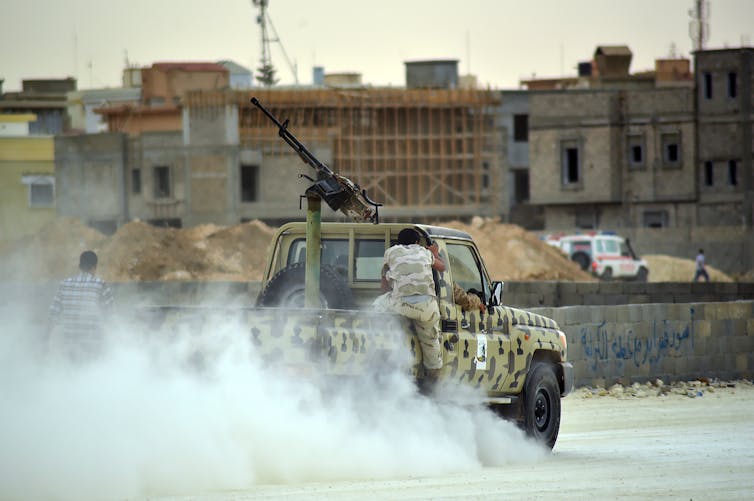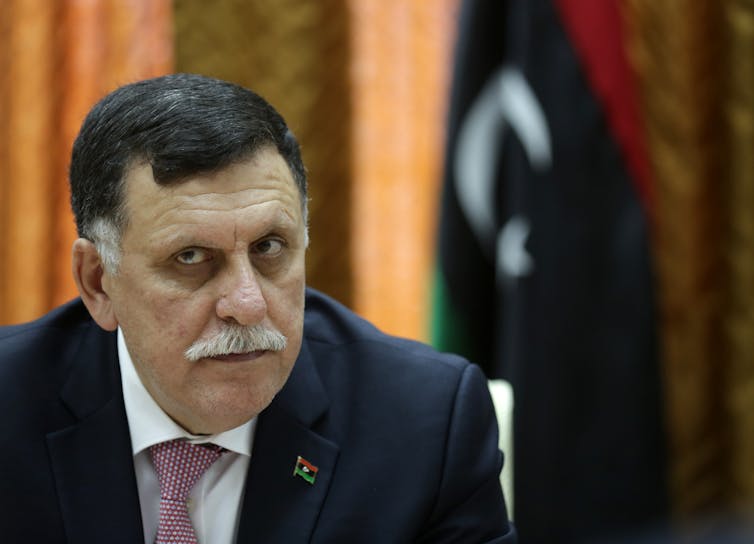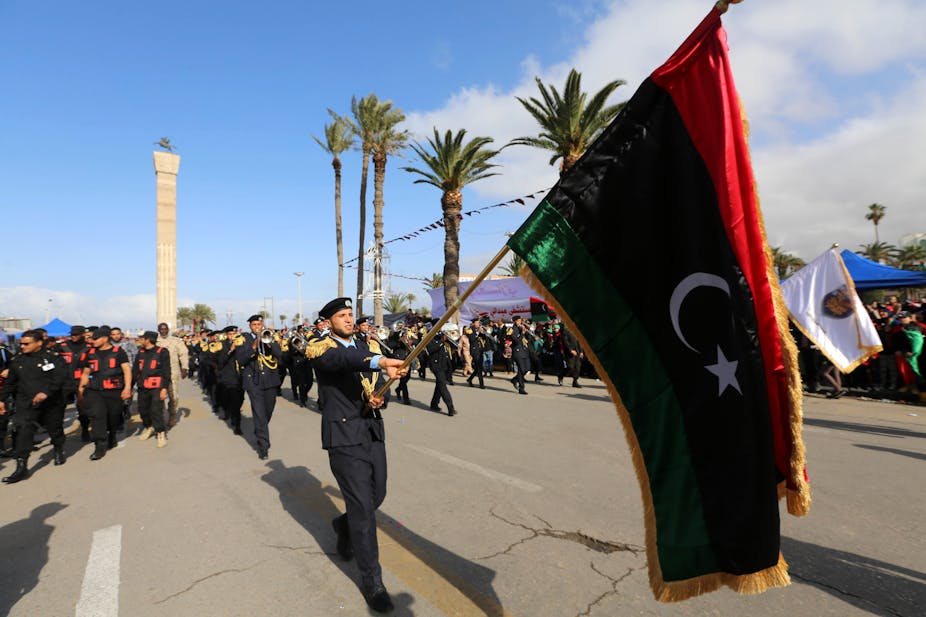After five years of violence and political instability, Libya may be on the verge of forming a stable government, after the self-declared administration in Tripoli stepped down in favour of the UN-backed unity government. But the violent political conflicts that have wracked the country since 2011 are far from resolved.
It wasn’t meant to be this way. Many Libyans were optimistic about the future of their country after the elections of July 2012. An autocratic leader had been overthrown and there were high hopes that the coming period would be one of democracy and freedom.
Expressing the mood of the time, the elected leader Mahmoud Jibril declared that “the Libyan people have managed to prove one thing: they are the real decision makers. That the destiny of this country is not in the hands of an individual, of any political force or political party. It’s only in their hands.”
Nearly four years later, however, rather than controlling its own destiny, the world has watch Libya slide further into chaos.
More than 2,000 militias are currently active in Libya, but several main factions exercise control over large territories. Since August 2014, a group known as Libya Dawn has controlled much of western Libya, including the capital Tripoli and the city of Misrata. Benghazi, the country’s second-largest city, is controlled by another group, Ansar al-Sharia, considered the most dangerous Islamist militia in Libya until the emergence of Islamic State (IS).

Al-Qaeda also appears to have a foothold – the eastern town of Derna, once held by IS, is now under the control of the al-Qaeda linked Muhahideen Shura Council of Derna. IS now dominates more than 150 miles of coastline around the city of Sirte. And, although the Islamist group lacks home-grown individuals who know Libya well, it is still growing fast and now has up to 6,000 fighters in the country.
Aiming to combat the growing power of militias, particularly IS, General Khalifa Haftar launched a raid dubbed Operation Dignity against supposed terrorist groups in Benghazi. But despite his claims that he is the main opponent of Islamist militias in Libya and that he supports the democratically elected government, he too controls large areas in the east of the country by force and has also directed his military might against non-terrorist groups.
So for all that some things have improved recently, violent chaos still reigns much in much of the country. But how did Libya get into this mess?
Forward, then backwards
After the overthrow of Gaddafi in 2011, the elected General National Congress (GNC) took power in Libya. Equipped with a weak and dismembered military left over from Colonel Gaddafi, it faced the monumental challenge of restoring stability after more than a year of fighting. Ousting Gaddafi from power was the easy part – disarming the militias that emerged to overthrow him has so far been impossible.
Instead of being disarmed, militias were funded by political parties seeking to assure their own protection. This, and the lack of a unified army or police force, enabled different militias to seize control throughout almost the entire country.
Meanwhile, the GNC was also tasked with forming an interim government and drafting a constitution, which was meant to be approved in a referendum – something that still hasn’t happened.
The process suffered a major setback in October 2012, when the incoming GNC prime minister, Mustafa Abushagur, was ousted after failing a second time to win parliamentary approval for a new cabinet. Former GNC member and human rights lawyer Ali Zeidan was elected in his place, but, less than two years later, he too was replaced – this time by Abdullah al-Thani, who then stepped down himself in April 2014 after his family was attacked by militia members.
After that, elections were held to the House of Representatives, a new legislative body that took over from the GNC. But these elections were marred by violence and a low turnout. Because secularists and liberals dominated the elections, Islamist lawmakers in the GNC refused to recognise the Council of Deputies’ mandate. So militias supporting the GNC (such as Libya Dawn) occupied Tripoli and forced the newly elected parliament to flee to the city of Tobruk in eastern Libya.
Talks to bring the two sides together initially failed when the GNC refused to participate. But in December 2015, the UN managed to broker an agreement that it hoped would restore stability to the country. Under the deal, the House of Representatives would remain the nation’s legislative body, while the GNC would become the State Council, a second chamber with an advisory role and veto powers.
And so, in March 2016, seven members of the House of Representatives – including the prime minister-designate, Fayez al-Sarraj – sailed into Tripoli and set up a temporary government at a naval base. However, refusing to accept the UN-backed government, GNC leaders responded by threatening legal action against any individuals who helped the new government to enter the city.

But in a rapid change of heart, GNC leaders announced on April 5 that to prevent further bloodshed, they had finally decided to abandon their claim to power and step aside. But, unable to admit defeat gracefully, the very next day GNC prime minister, Khalifa al-Ghweil, again reversed his decision, releasing a statement denouncing the UN-backed unity government and threatening any ministers who may choose to cooperate with it.
Clearly the political conflict in Libya is still much more complicated than merely being the GNC versus the UN-backed government. It seems that within the GNC there is confusion, with some members supporting the UN deal, while others are staunchly opposed. And these internal struggles in the GNC reflect the disunity between the various Islamist factions throughout the whole country.
Yet the bigger issue for Libyan politics is the question of if, and how, the new administration will be able to assert its authority. It remains to be seen who is really in charge in Libya.

